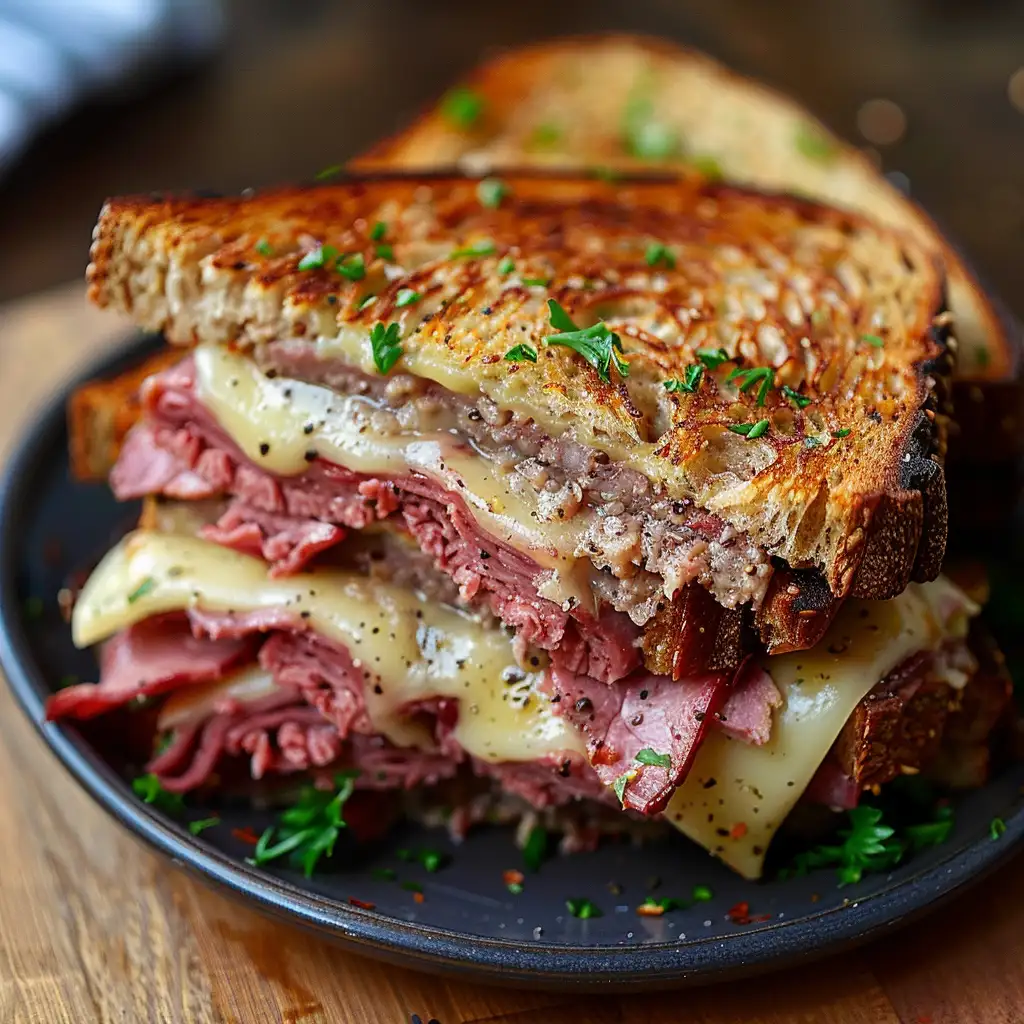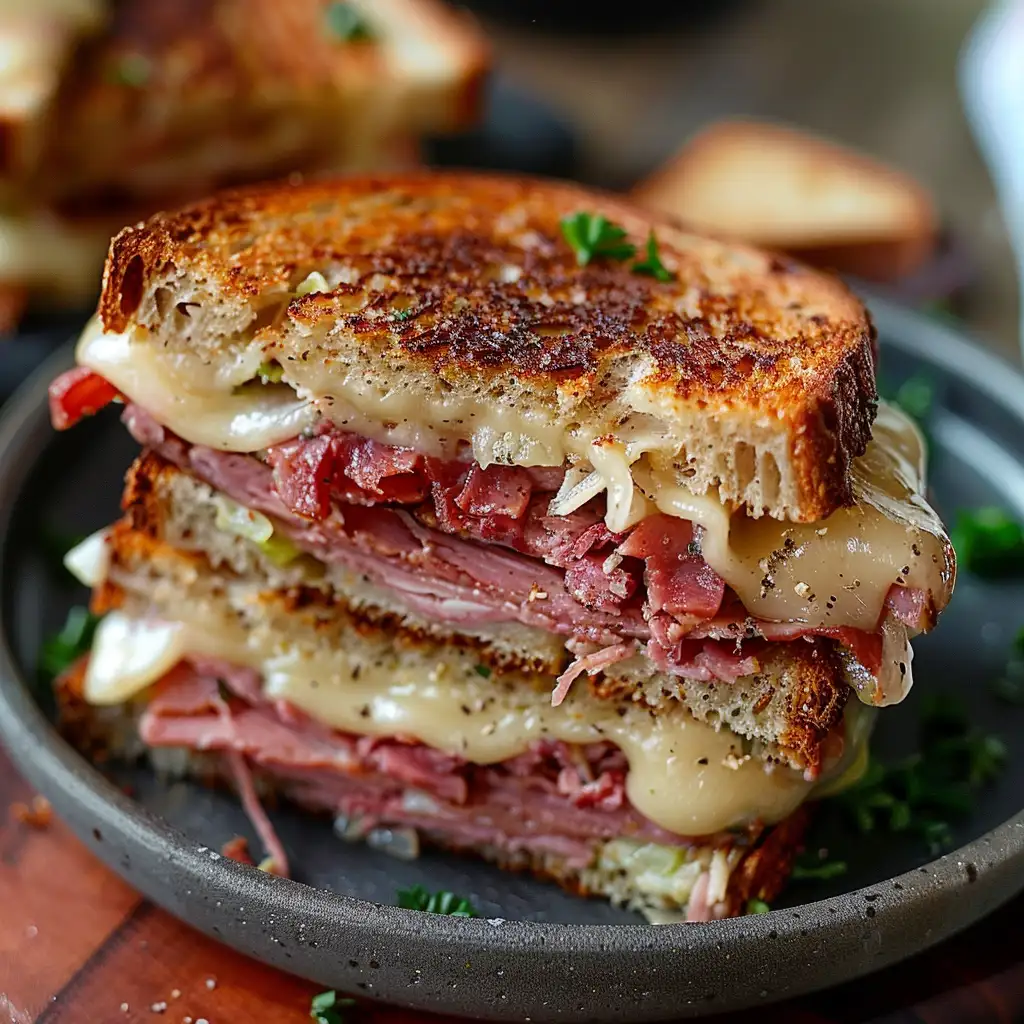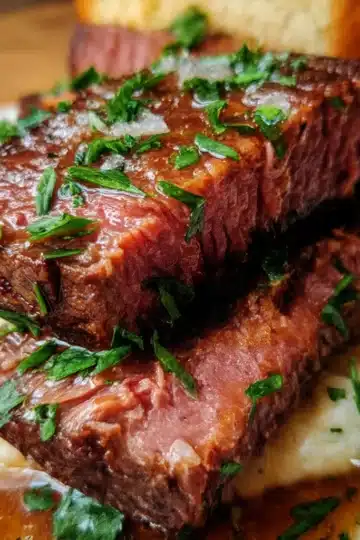Introduction to the Reuben Sandwich
The Reuben Sandwich is a beloved classic in American cuisine, renowned for its rich flavors and satisfying texture. This sandwich combines several key ingredients:
- Corned beef or pastrami
- Sauerkraut
- Swiss cheese
- Thousand Island dressing
- Grilled rye bread
Each component plays a pivotal role, melding together to create a unique and delectable eating experience. Its popularity extends beyond simple lunch fare, becoming a staple in both diners and upscale restaurants across the nation. The Reuben's ability to adapt to various dietary preferences, including vegetarian and vegan versions, further cements its status in the culinary world.
Historical Origins
The origins of the Reuben Sandwich are steeped in controversy, with two primary stories claiming its creation. This debate not only captivates culinary historians but also adds an element of mystique to the sandwich.
- New York City Theory: Some assert that the Reuben was first crafted in the bustling delis of New York, a city known for its significant Jewish population and influential deli culture.
- Omaha, Nebraska Theory: Others believe that the Reuben originated in Omaha, where it was supposedly invented during a late-night poker game at the Blackstone Hotel. This version of the story details how the sandwich was a serendipitous concoction by a local grocer, which quickly became a local staple.
In addition to its disputed origins, the Reuben holds a particular spot within Jewish delicatessens despite its non-kosher status. This is primarily because the traditional Reuben mixes meat and dairy, which contradicts kosher dietary laws. Nevertheless, its presence in Jewish delis highlights a broader culinary adaptation and acceptance.
For those interested in the differences between corned beef and pastrami, two common meats used in the Reuben, this resource provides an excellent breakdown, enhancing your understanding of what each can bring to the sandwich's flavor profile.
The narrative of the Reuben Sandwich, whether it began in New York or Omaha, underscores a rich tapestry of immigrant influences and culinary innovation. As such, it remains a fascinating topic for food enthusiasts and historians alike, prompting ongoing discussions and research into its true origins and lasting impact on American food culture.
Variations and Modern Adaptations
Regional Variations
The Reuben Sandwich, while classic in its original form, sees numerous regional adaptations across the United States, each adding local flair and preferences to this traditional dish.
- West Coast Reubens: In places like California, it's common to find Reubens with avocado slices or a spicy aioli, reflecting the state's love for fresh produce and bold flavors.
- Southern Twists: In the South, some versions swap the corned beef for smoked brisket or add a layer of coleslaw instead of sauerkraut, merging traditional Southern barbecue flavors with this Northern classic.
- Southwest Variations: In the Southwest, jalapeños or green chilies might be added to give the Reuben a distinct kick that complements the creamy dressing and tangy sauerkraut.
Each variation not only highlights the versatility of the Reuben but also tells a story of regional culinary preferences and adaptations, making the Reuben a true tapestry of American regional cuisines.
Innovative Modern Versions
In recent years, the Reuben Sandwich has undergone a transformation, with gourmet and fusion variations popping up in delis and restaurants nationwide. This evolution reflects broader culinary trends and dietary shifts, showcasing the sandwich's adaptability and enduring popularity.
- Gourmet Variations: Chefs are elevating the traditional Reuben with high-end ingredients such as artisan rye bread, house-made sauerkraut, and specialty cheeses like aged Gruyere or smoked gouda.
- Fusion Styles: Fusion versions might include elements like kimchi in place of sauerkraut or use teriyaki-glazed corned beef, blending Asian flavors with this quintessentially American sandwich.
These innovative versions are often influenced by contemporary tastes and the increasing demand for vegetarian and vegan options. For instance, seitan or tempeh can replace the corned beef, providing a plant-based alternative that maintains the Reuben's signature flavors.
To explore more about the cultural significance of deli foods, including the Reuben, and their impact on modern cuisine, check out this video series which delves into the rich history and evolving nature of deli classics.
The ongoing innovation within the Reuben's recipe not only keeps the sandwich relevant but also serves as a testament to its ability to inspire creativity and pleasure, proving that even the most traditional dishes can be reinvented for modern palates.
Cultural and Economic Impact
Cultural Significance
The Reuben Sandwich holds a distinctive place in American culture, bridging gaps between traditional Jewish deli fare and mainstream American tastes. Despite its non-kosher ingredients, which mix meat and dairy, the Reuben is a staple in many Jewish American communities, serving as a symbol of cultural adaptation and culinary innovation. Its presence in popular media and countless delis across the country underscores its iconic status and how food can play a pivotal role in cultural identity and heritage.
Economic Aspects
Economically, the Reuben Sandwich has proven to be a powerhouse in the food industry. Its widespread popularity drives significant business in delis nationwide, leading to:
- A consistent demand for classic ingredients like corned beef and sauerkraut.
- Innovations in sandwich making that attract a diverse clientele.
- Seasonal promotions and specialty variations that boost sales and customer interest.
This commercial success underscores the Reuben's role not just as a culinary delight but also as an economic asset within the American food sector, helping to sustain local businesses and suppliers.
FAQs
Common Questions About the Reuben Sandwich:
- What is the origin of the Reuben Sandwich?
- The exact origin is debated, often attributed either to Omaha, Nebraska, or New York City.
- Where are the best places to eat a Reuben Sandwich?
- Iconic locations include Katz's Delicatessen in New York and Zingerman's in Michigan. Learn more about the best Reuben sandwiches in the US.
- How can you make a Reuben Sandwich at home?
- Assemble rye bread, corned beef, Swiss cheese, sauerkraut, and Thousand Island dressing. Grill until the cheese melts and the bread is toasted.

Ultimate Reuben Sandwich Recipe – Classic Deli-Style
- Total Time: 20 minutes
- Yield: 4 sandwiches
Description
The Reuben sandwich is a classic American grilled sandwich composed of corned beef, Swiss cheese, sauerkraut, and Russian dressing, served between slices of rye bread. It's known for its tantalizing combination of savory, tangy, and creamy flavors.
Ingredients
- 1 tablespoon salted butter, room temperature
- 2 slices rye bread (use gluten-free bread if needed)
- 2 ounces cooked corned beef, sliced or shredded, warm
- ½ cup Swiss cheese, shredded (or 2 slices), room temperature
- 2 tablespoons sauerkraut, squeezed, drained, and coarsely chopped
- 1 tablespoon Russian dressing (or Thousand Island dressing)
Instructions
- Prepare the Bread: Butter the outside of each slice of rye bread. On the inside of one slice, sprinkle half of the Swiss cheese.
- Layer the Ingredients: Add the warm corned beef over the cheese. Then, layer the sauerkraut and spread the Russian dressing on top. Sprinkle the remaining cheese over the dressing.
- Top and Press: Place the other slice of bread on top, buttered side out.
- Grill the Sandwich: Heat a pan over medium heat. Place the sandwich in the pan and grill until golden brown and the cheese has melted, about 2-4 minutes on each side.
- Serve: Once both sides are nicely browned and the cheese is gooey, remove from the pan, slice, and serve warm.
Notes
- Ensure the sauerkraut is well-drained to prevent soggy sandwiches.
- Substitute Russian dressing with Thousand Island dressing if preferred.
- Prep Time: 10 minutes
- Cook Time: 10 minutes
- Category: Sandwich
- Method: Grilled
- Cuisine: American
Nutrition
- Calories: 740 per sandwich
- Sugar: 8g
- Sodium: 1780mg
- Fat: 40g
- Saturated Fat: 12g
- Carbohydrates: 47g
- Fiber: 6g
- Protein: 46g
- Cholesterol: 105mg






